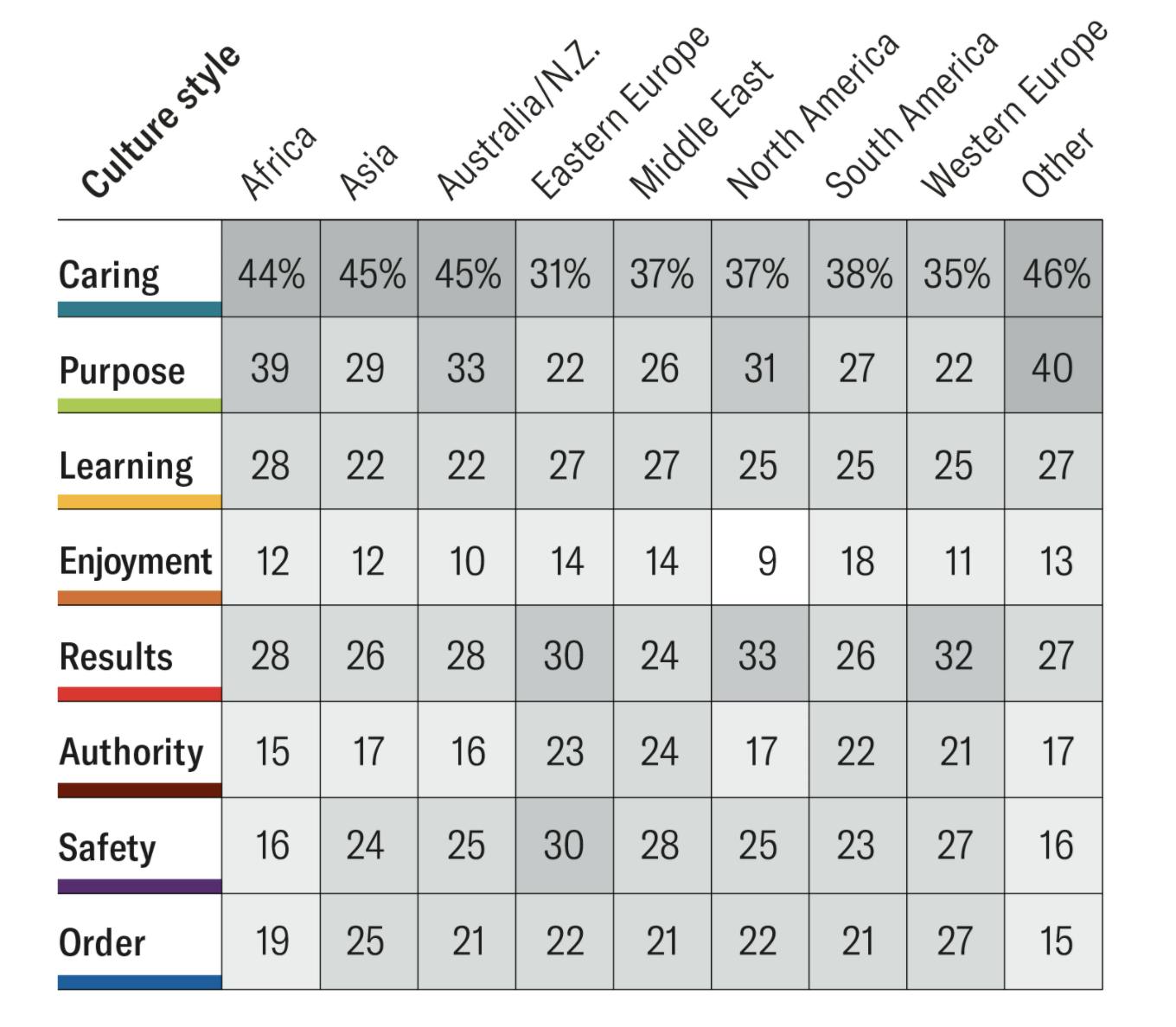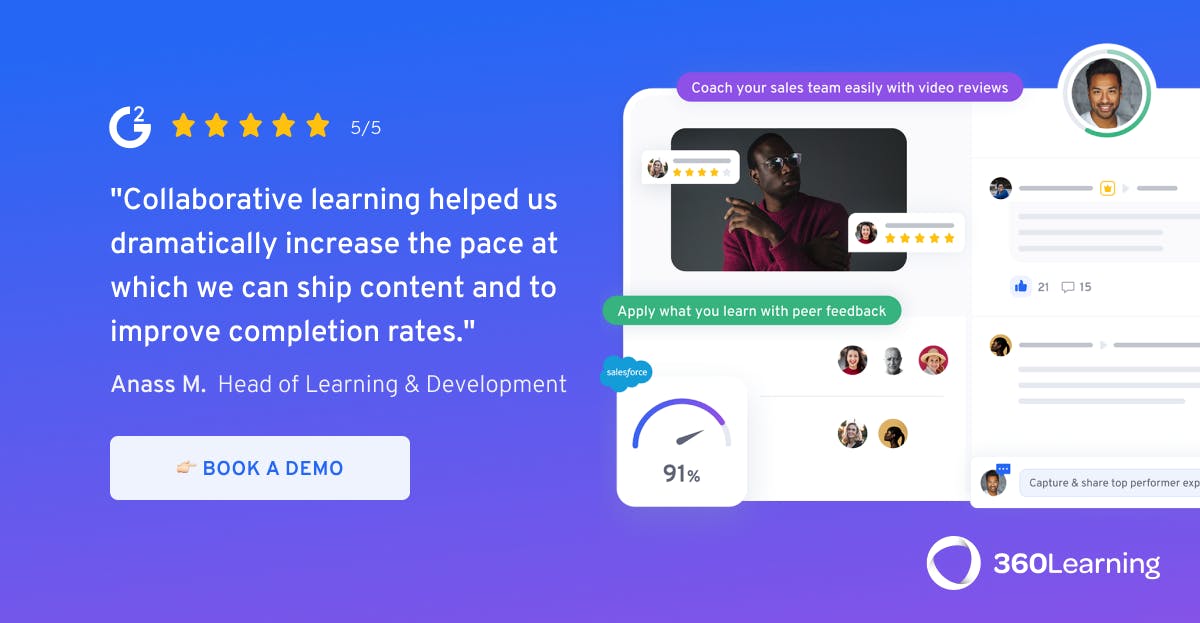According to research by Forbes and Rosetta Stone Business, 65% of executives say that language barriers exist between managers and other employees. This can have a big impact—the report noted that language barriers lead to miscommunication, decreased productivity, difficulty during group collaboration, and also prevented managers from feeling respected.
Learning and Development teams are in a unique position to help. Through effective training programs, you can create a more productive, welcoming, and collaborative work environment. You can also turn cultural differences into an advantage in running a global company and marketing internationally.
With that in mind, here are six training tips for breaking down language barriers in your multilingual team.
1. Consider using an interpretation and translation service for critical training
For critical training like safety, legal, or workplace knowledge compliance training, you can’t afford for any information to get lost in translation. Unfortunately, this happens far too often. OSHA (The Occupational Safety and Health Administration) estimates that language barriers are a contributing factor in a quarter of job-related accidents.
As SHRM (the Society for Human Resource Management) elaborates, "In terms of safety training, comprehension increases when learners can give their complete attention to the content without first needing to mentally convert the information into their first language. From the beginning of the training, the learner is focused on the subject matter, not on trying to translate and interpret the material."
The best solution would be to provide training directly in your employees’ native tongue. If that isn’t an option, you may want to look for translation services that can provide reliable language solutions so that you can offer interpretation or translation of your training program.
If you think that hiring a full-time interpreter would be inefficient, some companies offer in-call interpretations for real-time conversations. The advantage is you only pay for the duration of the call that they’re interpreting. The cost for this kind of service typically ranges from $70-180 per hour, depending on the difficulty of your niche and language pairing.
If you go with a company that provides interpretation and translation, you can also ensure that important training documents are translated by accredited professionals.
In terms of safety training, comprehension increases when learners can give their complete attention to the content without first needing to mentally convert the information into their first language.
2. Use video conferencing software that supports other languages
If you don’t think real-time translation is a good option, and you’re organizing a virtual training session, using video conferencing software that supports subtitles is a solid alternative. Not only will subtitles make it easier to communicate effectively with your multilingual team and train them thoroughly, but if videos are recorded, employees will be able to access the training later on any time. When looking for subtitle features, be aware that there are difference between transcription and dictation.
Here is some multilingual-friendly video conferencing software:
- Zoom: available in seven languages and lets its users create subtitles.
- Microsoft Teams: supports 44 languages with the option of live transcriptions in English.
- Google Meet: available in 24 languages with subtitling options.
- Skype: supports 43 languages with a live subtitling feature for 11 languages.
- Webex: offers options of 27 languages and lets its users assign a member to subtitle.
3. Encourage managers to be mindful of cultural differences
When working in your home country, it’s easy to overlook important cultural differences. This is a frequent cause of misunderstandings in the workplace, that can be compounded by language barriers. If you want to promote collaboration and a healthy working environment, it’s important that managers consider cultural differences before implementing office rules.
These are some of the things that some managers may overlook:
- Dress code: some cultures require or prohibit wearing particular pieces of clothing.
- Customs: some cultures prohibit eating or preparing certain foods and drinks.
- Religious practices: some employees may require specific time off for religious practices or celebrations.
- Social values: work culture tends to vary by country or region, as research from HBR shows below. Some employees may be used to more authority in the workplace, others may expect a flatter or less hierarchical structure.
Appropriate anti-bias and diversity training might be something to consider.
Related: Your New Manager Training Isn’t Working—Here Are 4 Ways to Revive It
4. Translate (some) supporting training material
It’s not easy for any employee to grasp everything in a training all at once, especially if it’s not in their native tongue. It could be helpful to provide translated supporting materials, like cheat sheets or recap videos, that summarizes everything you’ve discussed.
Think about what languages really make sense to translate. Running a quick survey for how comfortable each employee or team is in English might give you a feel for when translations should happen. Or, you can set up a system where individuals can request translations for a specific training.
Hiring an in-house translator is an investment that should be weighed against needs and costs. In many cases, it could make sense to hire remote translators in agencies, for cost efficiency and to have more language pairing options.
5. Make anonymous feedback possible
When training your multilingual team, it’s important to allow for anonymous ways of giving feedback. In fact, a recent study sponsored by the Mental Health Foundation found that less than 14% of employees feel comfortable talking to their managers about stress at work. It’s likely that employees who have trouble understanding a training won’t bring it up directly with their manager.
Something as simple as sending a Google Form, or a questionnaire through an employee experience tool, might help, if you enable contributors to stay anonymous.
After collecting these written concerns, it will not be easier to understand where employees are running into comprehension issues. You’ll be able to address the problem without putting anyone on the spot.
6. Invest in manager training
The problems created by language barriers are exacerbated when managers lack proper training. After all, management is all about communication. A new manager may be hung up on managing work efficiency and keeping tabs on who does what, when in fact what they really need is a refresher on leadership skills or soft skills training.
Think about what kind of manager training might be appropriate, and build in components around working with language barriers.
Related: 7 Types Of Employee Training, and When to Implement Each
Communication is critical for effective learning
Though language barriers can be an issue at work, they shouldn’t get in the way of effective learning and training. You’ll want to take extra care to be sure they don’t get in the way of group exchange, peer learning, and Collaborative Learning, which are key to effective learning outcomes.
More importantly (if you’re looking to scale your L&D program), you need a learning platform that makes it easy and efficient to manage multilingual training programs. Luckily, 360Learning’s Globalization solution was built with this challenge in mind. If you’re creating training in multiple languages, ask for a demo and see how you can increase completion rates by 91%, save the equivalent of ten workdays a year, and more:




